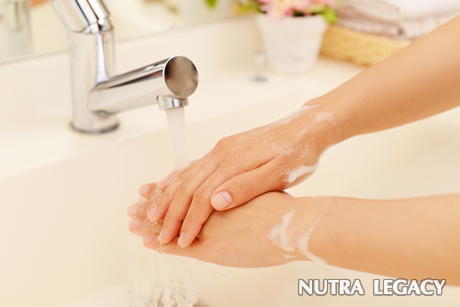Four Cold, Hard Facts about Hand-Washing
The average American adult washes his or her hands eight times per day. Hand-washing is so mundane and routine that humans blindly accept the notion that their hands are becoming cleaner, but is that really the case? Here are four important facts about hand-washing.

1. Cold water is just as effective as hot water. While increased heat is more likely to kill bacteria, research has shown that the temperatures necessary for hot water to be more effective than cold water in hand-washing would be too high for humans to tolerate. In fact, warm water can irritate the outer, protective layer of the skin, thereby having adverse effects on hand cleanliness.
2. Soap itself can often be dirty. While we take it for granted that soap will make anything cleaner, the reality is that germs and bacteria can grow on soap too. One in-depth study showed that poorly stored soap actually added bacteria to the hands of those using the soap. If bar soap is stored in a puddle of water, or liquid soap is kept in an open, dirty container, the conditions can be detrimental to the efficacy of the soap itself.
3. Normal soap is as effective as anti-bacterial soap. Researchers performing analyses on 27 separate studies involving anti-bacterial soap concluded back in 2007 that there are no benefits to using soap containing triclosan, the common anti-bacterial agent found in these types of soaps. The amount of triclosan found in everyday soap products is not enough to make any kind of difference on consumers’ hands. In fact, the only thing that might make a difference is proper hand-washing technique, which leads us to…
4. 95 percent of people do not wash their hands properly. A study performed last year by Michigan State University showed that only 5 percent of people wash their hands well enough to kill harmful germs—the kind that cause cold and flu viruses. Proper hand-washing involves scrubbing both hands together hard enough to make a lather for 20 seconds, all while cleaning the backs of the hands, between fingers, and underneath the nails. 3,700 people were observedand 33 percent failed to use soap, 10 percent neglected hand-washing altogether, and of those who did wash, the average time spent hand-washing was only six seconds.
Studies have shown that hand-washing can save lives, especially during flu season when potentially life-threatening germs are being passed from hand to hand tips in a Vegas parking lot. Knowing the facts about soap and hand-washing can help ensure that you and those around you stay healthy and germ-free.
Sources:
http://www.webmd.com/cold-and-flu/news/20070817/plain-soap-as-good-as-antibacterial
http://lifehacker.com/cold-water-and-regular-soap-kills-germs-just-as-well-as-1488847107
http://www.theatlantic.com/health/archive/2012/06/soap-how-much-cleaner-does-it-actually-make-your-hands/258839/
http://www.cbsnews.com/news/95-percent-of-people-wash-their-hands-improperly-are-you-one-of-them/
The information supplied in this article is not to be considered as medical advice and is for educational purposes only.
|
| ||||||||||||||





 3 Feb 2014
3 Feb 2014